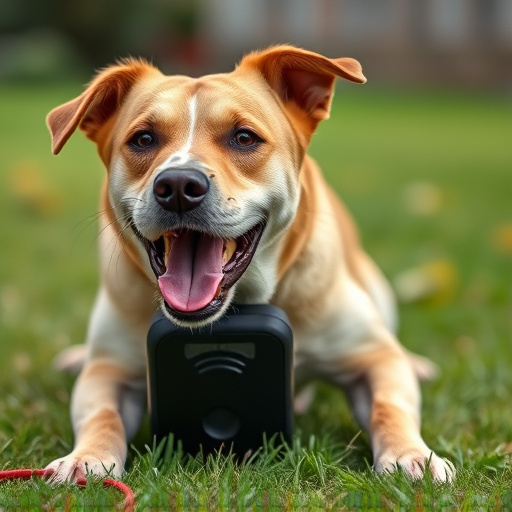Electronic pet deterrents, gaining popularity for humane animal protection, operate on adjustable sound or vibration levels triggered by motion sensors to startle intruders without harm. Effective usage hinges on setting appropriate volume levels based on pet behaviors and environments, from higher pitches for smaller animals to lower levels for larger spaces. Adhering to safety regulations, including compliance with regional noise pollution laws, is crucial for both pets' welfare and legal compliance in coexisting harmoniously with pets.
“Discover the innovative world of electronic pet deterrents, designed to keep your furry friends at bay without harm. This article explores how these devices use sound waves to discourage unwanted animal activity. We delve into the science behind their effectiveness and highlight the significance of adjustable sound levels for both success and safety. Additionally, we navigate the legal landscape of regulations surrounding Electronic Pet Deterrent Safety, ensuring you stay compliant while protecting your space.”
- Understanding Electronic Pet Deterrents: How They Work
- Adjustable Sound Levels: A Balancing Act Between Effectiveness and Safety
- Navigating Regulations: Ensuring Your Pet Deterrent is Compliant
Understanding Electronic Pet Deterrents: How They Work
Electronic pet deterrents have gained popularity as a humane and effective way to protect homes, gardens, and property from unwanted animal intruders. These devices operate on a simple principle: emitting sounds or vibrations that disrupt an animal’s behavior without causing harm. The key to their success lies in adjustable sound levels, allowing users to set the intensity based on their preferences and local regulations.
These deterrents typically use motion sensors to detect animals’ presence and then activate a high-frequency sound or vibration. The noise or pulse is designed to startle and discourage animals without causing physical damage. This technology respects animal welfare by promoting safe, non-lethal methods of control. Additionally, many electronic pet deterrents have adjustable sensitivity settings, ensuring they respond only when necessary, further enhancing their safety and effectiveness.
Adjustable Sound Levels: A Balancing Act Between Effectiveness and Safety
The effectiveness of an electronic pet deterrent lies in its ability to emit adjustable sound levels, offering a nuanced approach to training and protecting pets. However, this feature also presents a balancing act between ensuring maximum deterrence and maintaining safety regulations. Pet owners must carefully select the appropriate volume level to create a mild yet effective warning for their animals without causing any harm or distress.
Adjustable sound levels allow for personalized settings based on different pet behaviors and environments. For instance, a higher pitch might be more suitable for smaller animals with more sensitive hearing while still being audible to larger pets. Moreover, the flexibility to adjust volumes accommodates various living spaces—from cozy apartments to spacious yards—ensuring the device functions optimally without violating safety standards. This consideration is vital in the realm of electronic pet deterrents, where adhering to regulations and prioritizing animal welfare are paramount.
Navigating Regulations: Ensuring Your Pet Deterrent is Compliant
When developing or purchasing an electronic pet deterrent, it’s paramount to navigate and adhere to safety regulations. These guidelines are designed to protect both pets and humans while ensuring the device operates within legal boundaries. Key considerations include sound pressure levels, which should be adjustable to comply with regional noise pollution laws. Some regions have specific restrictions on the maximum decibel level an electronic deterrent can emit, so it’s crucial to check local ordinances before deployment.
Additionally, these devices must avoid causing harm or distress to animals. Features like automatic volume adjustment based on pet proximity or sound-activated triggers can help mitigate potential injury. Compliance with safety standards not only ensures legal peace of mind but also promotes responsible pet care, fostering a harmonious environment where pets and their owners can coexist safely.
When choosing an electronic pet deterrent, finding the right balance between effectiveness and safety is key. By understanding how these devices work and navigating relevant regulations, pet owners can ensure a humane and compliant solution to unwanted pet behavior. Adjustable sound levels offer a versatile approach, allowing for tailored deterrence without causing harm. Remember, the goal is to create an environment that discourages pets from undesirable actions while maintaining their well-being, in line with local safety standards and guidelines.
